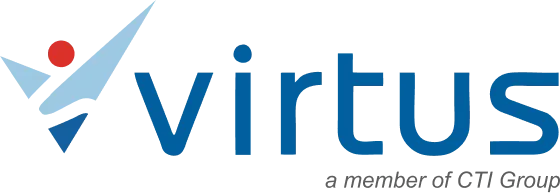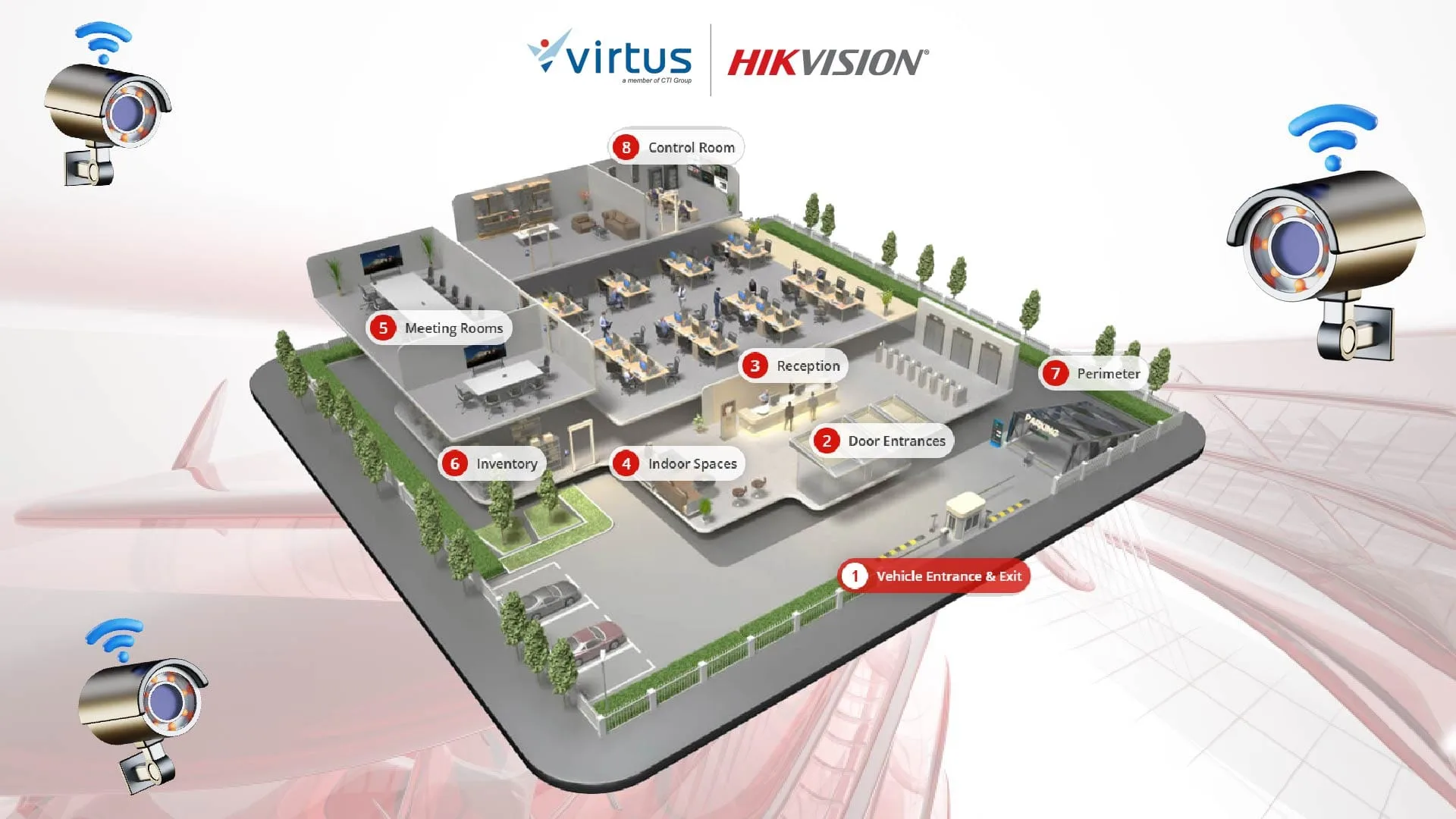Smart buildings are now gaining attention due to more than just trends—they are intelligent solutions that bring efficiency, comfort, and security. In Indonesia, the concept of smart office is gaining traction to support productivity and streamlined operations. According to data from Cisco, traditional buildings account for 40 percent of global energy consumption and 36 percent of carbon emissions.
This statistic highlighting that transitioning to smart building systems can have a major impact on the environment and operational efficiency. Smart buildings are more than just automated buildings that are digital solutions to the challenges of energy consumption and carbon emissions.
By utilizing IoT, sensors, and integrated systems to control lighting, ventilation, security, and other facilities in real-time, smart buildings are being implemented to manage building energy and security. Check out a detailed explanation of the evolution, supporting technologies, and challenges during smart building implementation in this article.
What is Smart Building?
A smart building is a structure that uses digital technologies and integrated systems to control and optimize building functions such as lighting, air conditioning, security, and other utilities. Through connectivity and intelligent sensors, a smart building can monitor environmental conditions and occupant activities to respond automatically enhancing comfort, energy efficiency, and overall safety.
Management systems in smart buildings are usually connected via the internet or IoT network, which allows building managers to control various facilities through only one centralized dashboard. Smart building implementation can provide added value in the form of operational cost savings, preventive maintenance, and analytical data for more informed decision making.
The integration of various technologies is what makes smart buildings not just a trend, but a necessity in the era of digital transformation.
The Evolution of Smart Buildings
As technology advances and the demand for operational efficiency grows, buildings are no longer just physical spaces—they are evolving into intelligent, adaptive systems. The concept of a smart building emerged in response to modern challenges such as excessive energy consumption, building security, and the need for collaboration in the hybrid work era.
Compared to conventional buildings that rely on manual controls, smart buildings integrate various systems—such as lighting, air conditioning, security, and internet connectivity—into a single digital platform that can be monitored and controlled automatically. This evolution creates work environments that are more comfortable, energy-efficient, and secure.
In campuses and modern workplaces, smart buildings also support user productivity by offering stable data connectivity, automated room reservations, and real-time space utilization tracking.
Technologies that Support Smart Building Implementation
Implementing a smart building relies on various advanced technologies that integrate to create a responsive, efficient, and data-driven system. Below are five key technologies that enable smart buildings:
1. Internet of Things (IoT)
IoT is the backbone of smart buildings by connecting sensors, devices, and building systems into a single network. IoT sensors monitor lighting, temperature, humidity, movement, and air quality, and transmit real-time data to a central management system for analysis and automated response.
2. Building Management System (BMS)
A BMS is a centralized control system that integrates various subsystems of a building, such as HVAC (Heating, Ventilation, and Air Conditioning), lighting, security, and energy monitoring. Through the BMS, building managers can control all aspects of operations via a user-friendly interface.
3. AI and Machine Learning
AI and ML enable smart buildings to learn from historical data and make predictions for more efficient energy management, schedule maintenance automatically, or dynamically respond to user behaviour—such as adjusting room temperature based on occupancy.
4. Cloud and Edge Computing
Cloud allows for large-scale data storage and processing, as well as remote access to building systems. Edge computing, on the other hand, supports local data processing on devices for faster and more reliable responses.
5. Networking and Cybersecurity Systems
A high-performance, secure network is essential in smart buildings. Cisco, for example, emphasizes the importance of IP-based networks that support connected devices and sensors, while ensuring data is protected from cyber threats through encryption, firewalls, and network segmentation.
Why Smart Building Becoming a Trend?
Smart buildings have become a global trend in modern infrastructure development across sectors such as education, offices, and commercial properties. The advancement of technologies like the Internet of Things (IoT), Artificial Intelligence (AI), and integrated management systems makes smart buildings an ideal solution for creating environments that are more efficient, secure, and comfortable.
Through centralized systems, smart buildings enable real-time monitoring and control of building elements such as lighting, room temperature, security, and energy consumption. Additionally, the drive toward energy efficiency and environmental sustainability is a major reason why smart buildings are gaining popularity.
Intelligent systems in buildings can adjust resource usage based on user activity patterns, reducing waste and carbon emissions. In educational environments, such as modern campuses, smart buildings support interactive learning and facilities that are more responsive to user needs.
Challenges in Implementing Smart Building
Despite offering various benefits, the implementation of smart buildings is inseparable from complex management and technological challenges. One of the main challenges is related to system integration.
Smart buildings require the coordination of various systems such as HVAC (Heating, Ventilation, Air Conditioning), lighting, security, and data networks that often come from different vendors. Without open architecture and common communication standards, this integration can be costly and difficult to manage.
Security is also a major concern, as more and more devices will be connected, opening up potential security gaps. Smart building systems need good protection because they can be easy targets for cyber-attacks that can disrupt operations and expose sensitive data.
Other challenges include the relatively high initial investment costs, the need for experts, and the dependence on a fast and stable network infrastructure. For this reason, a comprehensive strategic approach is needed, including the planning side, to risk management so that smart building implementation runs optimally.
Hikvision Solution for Smart Building
Hikvision offers a smart building ecosystem that integrates AI technology, IoT, centralized control, and security systems in an integrated manner relying on automation for a comfortable, safe, and efficient environment. With a holistic approach, Hikvision not only protects buildings from security risks, but also optimizes daily operations and improves user experience.
Hikvision’s smart building solutions include video surveillance systems, intelligent access control, building visitor management, energy management, integrated alarms, and real-time data analysis. All these systems are designed to be integrated so that smart building implementation can be safe, efficient and easy to manage.
Through a combination of AI cameras, touchless access control, environmental sensors, and centralized system management, Hikvision provides 24/7 protection and visibility, even when no one is on site. This solution is ideal for office buildings, government facilities, educational institutions, and modern commercial areas that are transforming towards digital.
Why Hikvision Become an Ideal Solution for Smart Building?
Hikvision provides a holistic approach to building a smart building ecosystem, focusing not only on security, but also operational efficiency and a better user experience. Here are some reasons why Hikvision is an excellent solution for smart building implementation.
Professional Security Practice
Hikvision is known to have a global reputation in professional security systems that are proven to be effective. With a product portfolio of AI analytics-based CCTV cameras, facial recognition systems, and suspicious behavior detection as a form of prevention and early detection to provide automatic and real-time surveillance.
These surveillance cameras with intelligent analytics can automatically detect suspicious movements, distinguish between humans and vehicles to prevent false alarms, and trigger alarm systems and real-time video playback for quick response. The system includes perimeter protection, wireless alarms, and environmental sensors (smoke, extreme temperatures, and water leaks) that work automatically to detect threats.
Notifications or evacuation protocols are automatically activated when needed. By doing so, Hikvision implements a proactive security system to prevent illegal access that can protect property and digital assets.
Improved Quality of Service
Hikvision devices are equipped with AI technology and full automation that minimizes manual intervention. Improved service quality includes touchless access using face recognition, ANPR (Automatic Number Plate Recognition), QR codes, and mobile applications to enhance human and vehicle access without compromising security.
In addition, Hikvision solutions can also be integrated with visitor management that enables digital guest registration, controlled temporary access, and automatic connection to elevator or entrance systems.
Digital Power for Smart and Efficient Operations and Management

Source: Hikvision
Hikvision’s ecosystem of solutions spanning CCTV, access control, alarms, to environmental sensors are connected in one centralized platform, HIkCentral. This dashboard makes it easy for building management to conduct real-time monitoring, respond to incidents quickly, manage elevators and lighting automatically, and save operational costs.
The building visualization feature allows operators to see the status of all devices in a building plan view, making it easier to make decisions and maintain the system.
Solution Scenario: Smarter Office Building Management Solution
The concept of smarter office building is becoming increasingly relevant for modern companies in the digital era amidst the increasing need for efficiency, security, and a better work experience in the office environment. Hikvision offers a comprehensive solution for smart office management, integrating video technology, AI, access control systems, and centralized management platforms to create a safer, more efficient, and responsive work environment. Here are four solution scenarios offered by Hikvision.
1. Comprehensive Security and Situational Awareness
Leveraging intelligent video technology, Hikvision’s solution delivers AI-powered surveillance systems capable of detecting abnormal movements, facial recognition, and real-time object tracking. This not only enhances security but also enables building managers to respond to incidents more quickly and accurately. Additionally, face recognition and RFID card-based access control systems ensure that only authorized individuals can enter restricted areas.
2. Smarter Access and Traffic Management
Hikvision also offers a Visitor Management System to digitize the guest check-in process. Visitors can self-register through kiosks connected to the building’s security system, which automatically prints badges and integrates with elevators and automated doors—allowing access only to permitted areas.
Moreover, smart parking management with ANPR (Automatic Number Plate Recognition) streamlines vehicle entry and exit, reduces congestion, and provides real-time parking availability information.
3. Comfortable Working Environment and Energy Saving
Hikvision’s building automation system integration enables the management of lighting, temperature, and other electronic devices based on room usage and occupancy. With AI sensors, the system can detect the presence of people in the room and automatically adjust lighting and air conditioning temperature, thereby saving energy and enhancing comfort.
4. Centralized Management and Intelligent Analytics
Hikvision’s ecosystem, which includes CCTV, access control, alarms, and HVAC, is managed through HikCentral Professional, a centralized management platform. This platform consolidates all data into a single, intuitive UI that helps building managers monitor, analyze, and optimize operations in real-time. Intelligent analytics can help management make data-driven decisions, including planning workspace capacity, energy efficiency, and security.
Here are six benefits of Hikvision’s smart building solution:
- AI video surveillance: cameras with AI technology to detect suspicious behavior, identify objects, and send real-time notifications without constant human intervention.
- Touchless access control: access control using biometrics with touchless technology to enhance security.
- Smart alarm & sensor: automatic detection of fire, gas, abnormal temperature, and illegal access that is immediately linked to video playback.
- Integrated visitor management: secure and fast guest registration, reducing receptionist burden.
- Energy-saving automation: integration with sensors and automation systems to significantly save energy without compromising security.
- Open-platform architecture: flexible for integration with third parties, ensuring high scalability and long-term investment.
Baca Juga: Meet CCTV AI, the Next Generation Security Solution
Build Your Smart Building Management with Virtus
Virtus Technology Indonesia as part of CTI Group, offers Hikvision as a solution to implement the smart building concept in your office to campus. Supported by a team of experienced and certified IT experts, Virtus ensures every solution is implemented according to global standards and industry best practices without trial and error.
It’s time to implement smart building to increase security and efficiency, while saving operational costs in your office building. Contact the Virtus team by clicking this link o start the consultation stage so that our team can help you deliver reliable smart building solutions from Hikvision.
Author: Ervina Anggraini – Content Writer CTI Group

